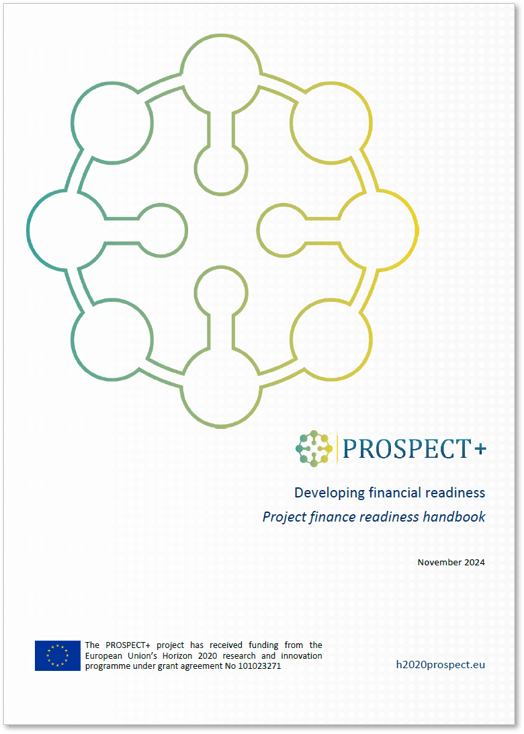The Developing Financial Readiness Handbook is a comprehensive guide produced under the Horizon 2020-funded PROSPECT+ project. It targets local authorities, energy agencies, and stakeholders involved in sustainable energy projects, aiming to enhance their capacity to bring initiatives to a state of financial readiness and successfully secure public or private financing.
At its core, the handbook defines financial readiness as a project’s preparedness to secure funding based on a robust demonstration of fiduciary reliability, well-defined objectives, sound legal frameworks, stakeholder engagement, and mature technical planning. Unlike market readiness or profitability assessments, financial readiness is about aligning with the expectations of potential financiers and risk mitigation.
Key Technologies, Tools, and Innovation
A central innovation of the report is the Project Finance Readiness Tool, a self-assessment instrument that allows project developers to evaluate the financial maturity of their initiatives. The tool operates through structured questions and scoring metrics across seven core areas:
-
General Info & Background – Involves institutional data, governance structure, and contact information, as well as evidence of technical expertise and prior similar projects.
-
Fiduciary Information – Demonstrates budget history, audit compliance, creditworthiness, ESG alignment, and conflict of interest disclosures. These elements establish credibility and financial stability.
-
Scope of Proposal – Emphasizes a clear project rationale, objectives, technical measures, stakeholder involvement, and supporting documents like SEAP/SECAPs or energy audits. Crucially, it requires baseline energy data and investment estimations to calculate savings and environmental impact (e.g. CO₂ reductions).
-
Project Management – Recommends a structured implementation plan with a clear assignment of responsibilities and milestones, often visualized through Gantt charts. Effective project management signals risk mitigation to investors.
-
Promoters & Stakeholders – Encourages stakeholder mapping (e.g., ESCOs, municipalities, citizens), including risk profiles, ownership roles, and stakeholder engagement strategies. Letters of support and asset ownership details further strengthen investor confidence.
-
Legal & Regulatory Analysis – Covers environmental and zoning regulations, legal frameworks (e.g., EPC permissibility), permitting requirements, and dispute resolution mechanisms. Legal preparedness is framed as a decisive component in derisking projects.
-
EPC-Specific Information – For projects using Energy Performance Contracting (EPC), the tool guides assessment of ESCO availability, legal permissibility, contract structuring (e.g. energy savings guarantees), and bankruptcy risk protections.
The Project Finance Readiness Tool provides color-coded and score-based feedback across categories, allowing users to identify areas for improvement and benchmark against successful projects. This modular and universal design enables broad applicability across diverse sustainable energy initiatives.
From Strategy to Finance-Ready Projects
The handbook emphasizes a step-by-step transformation from an idea into a finance-ready proposal. It does this by:
-
Encouraging early and detailed planning
-
Promoting internal and external collaboration (teamwork and proofreading)
-
Integrating legal, financial, and technical analysis upfront
-
Offering tools like templates for stakeholder analysis, Gantt charts, and a financial indicators calculator
It also distinguishes project viability (technical and economic potential) from financial readiness, noting that many viable projects fail to secure funding due to underdeveloped proposals.
Link Between Technologies and Applications
The guide draws a direct connection between technology readiness and investment attractiveness. Projects using proven, mature technologies with predictable returns are more likely to attract investment. For example, energy audits help quantify baseline consumption, which directly supports performance-based financing models such as EPCs, where an ESCO guarantees savings. Similarly, projects embedded within frameworks like SEAP/SECAP benefit from alignment with EU and national policy goals, enhancing their legitimacy.
Additionally, the integration of ESG strategies (Environmental, Social, Governance) and transparency in fiduciary reporting are shown to align projects with investor trends in sustainable finance, such as green bonds or impact investments.
Policy and Capacity Building
While not a policy report per se, the handbook supports policy implementation by fostering decentralized energy project development. The Capacity-Building Programme (CBP) under PROSPECT+ enables peer-to-peer learning among municipalities, reinforcing a network of energy transition leaders. It also guides public authorities in leveraging prior experiences and collaborating with financiers, policymakers, and technical experts.

